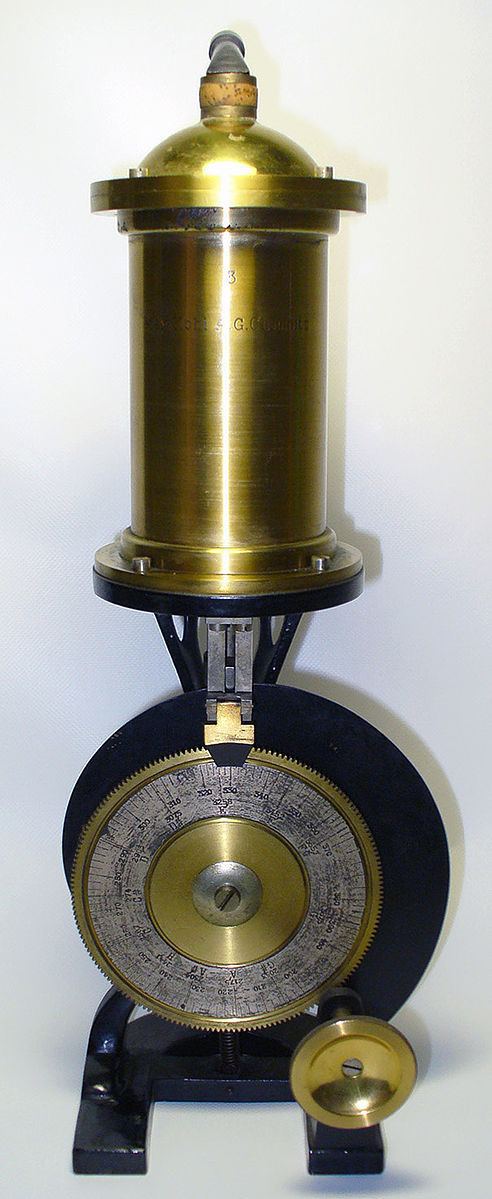 | ||
German psychologist William Stern invented the tone variator in 1897 to study human sensitivity to changes in pitch, going beyond the traditional psychophysical research of studying the sensitivity to differences in discrete tones. The instrument consists of an adjustable brass resonator, which is supplied with a constant flow of air across the opening at the top. Turning a graduated cam on the front of the apparatus raises or lowers a piston in the bottom of the resonator, changing the volume of its interior, thus altering the sounded pitch over a continuous range.
The spiral-shaped cam is such that equal angles of rotation approximately correspond to equal changes in frequency. A dial on the front of the cam indicates the current resonance frequency and musical tone of the instrument.
Subsequent improvements to the device include the addition by G. M. Whipple of a gasometer, in order to regulate the incoming air supply. A version of the device was also produced in which the bottom of the resonator was not displaced by a spiral, but by rack and pinion (see figure); in these, an eccentrically-operated pointer is used to indicate the frequency on the scale.
The instrument has been used in demonstrations, for tuning other instruments, and for research in psychology and otology. According to Stern, his research in the "apperception of change" began a "decisive metamorphosis" in his understanding:
The issue [apperception of change] was raised by a psycho-physical proposition: I wanted to discover the 'sensitivity,' not as Fechner and his successors, for two barely distinguishable constant stimuli, but for the continuous change of one stimulus into another. At first I conceived the problem in purely sensationist terms, sought to determine thresholds experimentally, raised the question of the possible existence of 'transition feelings,' etc. Soon, however, the sphere of my inquiry widened in the direction of descriptive and humanistic problems.
